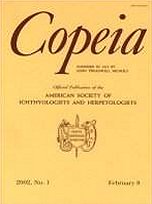We assessed factors related to the occurrence of allopatric and sympatric Paiute Sculpin (Cottus beldingi) and Mottled Sculpin (Cottus bairdi) in the Salt River watershed of Wyoming and Idaho, 1996–1997. Sympatric occurrences of Paiute Sculpin and Mottled Sculpin were found in downstream segments of tributaries across a wide range of elevations, stream temperatures, channel slopes, and stream sizes. Allopatric Paiute Sculpin was found in small, high-elevation streams with low summer water temperatures, high channel slopes, large rocky substrates, and low densities of Brown Trout (Salmo trutta). Allopatric Mottled Sculpin occurred in spring streams that were wide and deep, dominated by fine substrate, and supported high densities of Brown Trout. Mottled Sculpin was absent from all tributaries on the eastern side of the drainage where streams have low summer water temperatures, high-gradient channels, and barriers that can influence upstream movements. This study suggests that stream geomorphology, thermal characteristics, local habitat conditions, and nonnative fishes differentially influence the occurrence of Paiute Sculpin and Mottled Sculpin.
BioOne.org will be down briefly for maintenance on 17 December 2024 between 18:00-22:00 Pacific Time US. We apologize for any inconvenience.
How to translate text using browser tools
1 August 2004
Factors Affecting Allopatric and Sympatric Occurrence of Two Sculpin Species across a Rocky Mountain Watershed
Michael C. Quist,
Wayne A. Hubert,
Daniel J. Isaak
ACCESS THE FULL ARTICLE





